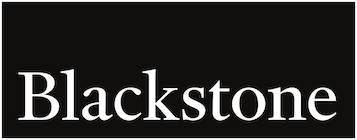Byron Wien: Time for a Pause
We had a pretty good year with the Ten Surprises of 2021. Although the goal is to stretch our own thinking and that of our clients, seeing some of the Surprises reflected in reality is always gratifying. The definition of a Surprise is an event the average investor would only assign a one-in-three chance of happening, but which we believe is probable, having a better than 50% chance of taking place. We were right to anticipate the widespread use of effective vaccines to deal with COVID-19. We also thought that strong growth in the economy would occur in spite of the pandemic. Our target for the S&P 500 was 4500, and the index reached that point and exceeded it. We expected the price of West Texas Intermediate oil to exceed $65 a barrel, and it did. We also thought the US dollar would rise against other currencies, and that happened too, even though shorting the dollar was among the most crowded trades of late 2020. We also were wrong on many Surprises. Relations between the United States and China worsened; interest rates stayed low; Facebook (now Meta) and Google remain under Justice Department scrutiny; and we certainly did not anticipate anything like the January 6th attack on the Capitol.
Looking at this year’s Surprises, the 37th edition, in detail, in the first one we thought that the strong markets of the past few years would rest for a while, and the S&P 500 would end the year where it started. Strangely, that would be unusual. Over the last 95 years, the index has had a negative annual return around one fourth of the time, with an average loss of 14%. The rest of the time annual returns were positive, averaging 21% per year. But “flat years,” those in which the stock market moves by no more than 5% in either direction, are rare, occurring just 13% of the time. Over the 12 times this has occurred since 1927, the average return was 0%. Along with the generally muted returns we expect over the course of 2022, we do think there will be one or more corrections, but none exceeding 20%. We have felt for some time that equity market valuations were full, with most valuation measures at or near all-time records throughout 2021. The S&P 500 has now more than doubled since 2018, and the average return of the past three years, at 26%, is above the average of historical “up years” discussed earlier. Finally, the ten largest stocks in the S&P 500 (just 2% of the constituents) now comprise just under 30% of the index’s total market capitalization, which exceeds the last peak, during the Tech Bubble, and account for the largest share since the 1970s. All of this serves to highlight the difficulty that the equity market will have in making significant progress this year. However, we are not bears. Ed Hyman from Evercore ISI likes to say that the stock market doesn’t peak until earnings do. Earnings growth was extremely strong last year, and as we also wrote in the first Surprise, we think earnings will be strong in 2022 as well. While we expect elevated volatility, there will still be pockets of opportunity, and we think that value will outperform growth.
In the second Surprise, we find ourselves clearly in the “not transitory” camp. We think that inflation will come down from the recent 6.8% print for the Consumer Price Index, but only to 4.5%, well above where most estimates are today. The majority of investors have been in the “transitory” camp, and while inflation expectations have risen, I think that the consensus is still for inflation to drift back down to pre-crisis levels after the next 1-2 years. Personal consumption expenditure price data, which exclude food and energy, were up 4.7% over the past year, pretty close to our estimate for 2022. While some commodities may come down in price, two key components of inflation are likely to be rising persistently. They are rents and wages. House prices across the country are up more than 20% over the past year, and that appreciation will eventually work its way into rent price growth. The various components of shelter comprise around one third of the Consumer Price Index basket, so even as COVID- and supply-related inflation begins to be alleviated, higher rents can go a long way in supporting elevated levels of inflation. In addition, the number of people in the 25–34 age group – the prime family formation age group – who are living with their parents has risen from 10% in 2003 to 18% today. As they begin to move out on their own and form households, that will increase demand for housing and likely will put upward pressure on rents. Given the acute lack of housing stock, we have seen strong pricing data already in segments of Blackstone’s residential real estate portfolio, but the government inflation data aren’t reflecting this yet. Expect that to turn around this year.
As for wages, there are approximately 10 million unfilled jobs in the US, and while the labor force is nearly back to its pre-COVID level, there are 8 million fewer people on nonfarm payrolls today than there would be had payroll growth followed historical trends. Many people have dropped out of the workforce entirely, leaving the pool of available workers structurally smaller. Perhaps as a result of saving or investing, some people simply don’t feel that they need to work in order to get by. In addition, a significant number of older people have apparently chosen to retire early. There have also been changing attitudes towards certain types of work, continued concerns about COVID-19, problems with covering childcare, and other issues that are making it tough for businesses to hire. To fill job openings, wages will have to move higher, resulting in a “sticky” form of inflation – once an employer gives someone a raise, it’s tough to take that back. As for commodities, they may not come down as much as many think. Oil prices will be supported by rising demand as the economy returns to normal, and lumber prices – which rose from $400 per thousand board feet to $1,700 – have only dropped back to $1,000.
Our third Surprise concerned the bond market. Last year, we thought the 10-year Treasury yield would rise to 2%. While it shot up quickly in the first quarter, to 1.7%, it never made it to our target. This was primarily a result, we believe, of accommodative monetary policy. The combination of continued tapering of bond-buying and eventual raising of interest rates by the Federal Reserve will lead to higher yields this year, and our Surprise target is 2.75%. There are few market observers who expect the yield to exceed 2%, because most are in the “inflation is transitory” camp. We also believe the Fed, in its zeal to control inflation, will raise rates four times, or a full percentage point. Markets have moved extremely fast to price in just under four rate increases in 2022, up from nearly three at the start of the year. The current consensus economic forecast is for three hikes, though surveys may be lagging sentiment. We expect that the Fed will be increasingly concerned that inflation is diminishing the real income of the average worker, so much so that it chooses to move four times. The impact of this on the stock market, however, is not likely to be severe. The market response to Fed tightening usually occurs towards the end of the rate hiking cycle, rather than the beginning. The impact on the economy depends on the degree of momentum that the recovery demonstrates as the pandemic declines.
In Surprise Four we expect to return to a reasonable form of “normal” (i.e., something that resembles life as we knew it in 2019) by the end of the year. We fully expect some secular changes. Variants of the COVID virus are likely to be with us for some time, requiring periodic booster shots. Employees in many office jobs have shown that they can accomplish major portions of their required tasks working remotely. As a result, they will want to have more flexible schedules, coming into the office three or four days a week. Not all employers will accommodate this, but a significant share of them likely will be flexible. Business travel may also be modified moving forward. After the initial getting-to-know-you contact, a salesperson may rely more on Zoom for follow-ups. Universities may supplement classroom sessions with remote learning, but the K-12 curriculum will remain mostly in the classroom, where social as well as intellectual skills can be developed. We have learned during the pandemic that people have a desire to be together. They want to attend cultural and athletic events, eat indoors in restaurants and attend weddings and other family gatherings. By the end of the year, we would expect many people to be behaving in their daily lives much as they did in 2019, in spite of the inevitable emergence of new strains of COVID.
In the fifth Surprise, we expect China to recognize that the absence of a social safety net covering healthcare and retirement has caused many citizens to turn to housing as a form of savings account. The government is encouraging the development of an asset management industry to limit housing speculation, creating opportunities for European and American money managers. While some investors remain cautious about operating in an authoritative economy where rules can change abruptly, the potential size of the market is tempting. The Chinese government’s relationship with that of the United States remains strained, however, and this is going to be an issue that investors are navigating for the foreseeable future.
Although we expect cryptocurrencies to continue to gain acceptance throughout the year, the sixth Surprise is that gold emerges from its doldrums and its price rises by 20%. A stock market that does well year after year, coupled with low interest rates, makes risk assets relatively attractive and tends to lead to diminished interest in gold as an investment alternative. If we were right in our view of a neutral US equity market in 2022, combined with persistently higher inflation, people might turn to gold because of its perceived inflation hedge. Gold continues to be viewed as just that – a hedge – and only in rare cases does it comprise more than 5% of an investor’s portfolio.
Oil had a good year in 2021, and we expect that trend to continue this year as the recovery continues and people become more mobile. Our seventh Surprise is that OPEC will remain restrictive, and while supply shortages might be slightly and temporarily softened by releases of crude from the Strategic Petroleum Reserve in the US, increased demand will push the price of West Texas Intermediate crude to $100 a barrel or higher. The push for green energy has discouraged oil and gas exploration, so even though today’s high crude prices encourage broader shale production, the prospects for large increases in crude reserves are limited. Governments around the world have set ambitious goals for gasoline consumption per mile of driving, but it is not clear those goals will be met. Similarly, although electric vehicle (EV) production is expected to increase as a proportion of overall vehicle production, its impact on demand for crude will only be felt gradually. Last year we thought West Texas crude would reach $65, more than 50% above its price at the end of 2020, and we got a lot of pushback from clients. We expect the same will happen this year.
Most observers think that nuclear energy is off the table as a green alternative, but our view is that it will get renewed consideration in 2022. That is our eighth Surprise. According to the World Nuclear Association, only Asia continues to embrace nuclear power with enthusiasm, with China, Japan, and India all planning to build new plants. Thirty-five reactors in Asia are already under construction. Europe has fifteen planned, although Germany is retiring three of its remaining six nuclear power plants and plans to close the last three by the end of the year. The International Atomic Energy Commission notes that two-thirds of the 441 active nuclear power plants in the world are at least 30 years old. The Fukushima disaster was more than a decade ago, but fears of a nuclear plant failure are very real everywhere, especially in the United States. Major progress has been made ensuring the safety of future plants but the correct storage and disposal of nuclear waste remains a challenge. Nuclear, however, does not add to the problem of carbon in the atmosphere, and that remains its primary attraction. If its safety and disposal issues can be resolved in the mind of the American public, nuclear could go a long way in helping the US reach its green energy objectives. How we are going to hold off the devastation of climate change without it is hard to see. A surprise would be the announcement of a major new nuclear plant in the Midwest with a minimum of political backlash. Nuclear fusion technology also holds promise, but we are not likely to see that become practical any time soon.
Everyone is talking about environmental, social, and governance factors, whether they are a money manager or operating a company. Our ninth Surprise is that in 2022, companies will be held accountable for progress they have made on those factors. There is no company that does not want to improve its ESG compliance, but the U.S. government becomes uncomfortable with the rate at which progress is being made, and therefore develops and imposes standards and penalties. Similar efforts are underway in Europe already, and it is further along with respect to ESG regulations and disclosure requirements. Indeed, the SEC has put on its agenda for this April a proposal for climate-related disclosures.
In the tenth and final Surprise, we speculated that several raw materials would run into short supply, affecting the production and cost of electric vehicles. Lithium, cobalt and nickel are vital for EV manufacturing. The problem may be exacerbated by the fact that China is the major holder of some of these resources and wants them to be available to their own EV manufacturers rather than put them on the open market for export. This will represent a setback to the goal of reducing carbon emissions to prevent global warming beyond a finite limit.
Every year we always have a few “Also Rans” that don’t make the basic list of Ten Surprises, either because we do not think they are as good as the Ten we picked, or we do not think they have a better than 50% chance of happening during the year.
In the first Also Ran, we speculate that gene-editing continues to evolve. Medical researchers are able to identify genetic imperfections and make modifications to correct them, with the US Food and Drug Administration approving the first ex vivo gene-editing treatment. The ethical aspects of this become a matter of intense debate, but CRISPR technology is here to stay, and it opens up a number of pharmaceutical possibilities that will benefit the general population and the healthcare industry.
In the second Also Ran, we said that Jamie Dimon, a long-time critic of cryptocurrencies, reverses his position. We also thought that J.P. Morgan would seek to become a leader in the space. While crypto remains controversial, it is gaining increasing acceptance across the investment universe, particularly among younger participants. Its intrinsic value remains hard to understand for many, and vigorous and vocal skeptics continue to be heard.
In the third Also Ran, semiconductor leadership is the issue. Taiwan Semiconductor continues to be the world leader in the development and production of the smallest and most complicated chips, and both China and the United States resolve to put their resources behind an effort to achieve leadership in the field. This is important because semiconductors are fundamental to almost every area of technology and the global economy is dependent on them.
Finally, for the fourth Also Ran, we say that Puerto Rico’s good weather and favorable tax structure attracts a number of the newly rich who can work at least a part of the year remotely. Many crypto millionaires are already down there and the availability of attractive homes in traditional watering spots has diminished.
So there they are. Now let’s see how the 37th year of The Ten Surprises plays out.
Taylor Becker provided critical assistance in the development of the Ten Surprises and the writing of this essay.
The views expressed in this commentary are the personal views of Byron Wien, Joe Zidle, and Taylor Becker and do not necessarily reflect the views of Blackstone Inc. (together with its affiliates, “Blackstone”). The views expressed reflect the current views of Byron Wien, Joe Zidle, and Taylor Becker as of the date hereof, and neither Byron Wien, Joe Zidle, Taylor Becker, or Blackstone undertake any responsibility to advise you of any changes in the views expressed herein.
Blackstone and others associated with it may have positions in and effect transactions in securities of companies mentioned or indirectly referenced in this commentary and may also perform or seek to perform services for those companies. Blackstone and others associated with it may also offer strategies to third parties for compensation within those asset classes mentioned or described in this commentary. Investment concepts mentioned in this commentary may be unsuitable for investors depending on their specific investment objectives and financial position.
Tax considerations, margin requirements, commissions and other transaction costs may significantly affect the economic consequences of any transaction concepts referenced in this commentary and should be reviewed carefully with one’s investment and tax advisors. All information in this commentary is believed to be reliable as of the date on which this commentary was issued, and has been obtained from public sources believed to be reliable. No representation or warranty, either express or implied, is provided in relation to the accuracy or completeness of the information contained herein.
This commentary does not constitute an offer to sell any securities or the solicitation of an offer to purchase any securities. This commentary discusses broad market, industry or sector trends, or other general economic, market or political conditions and has not been provided in a fiduciary capacity under ERISA and should not be construed as research, investment advice, or any investment recommendation. Past performance is not necessarily indicative of future performance.
For more information about how Blackstone collects, uses, stores and processes your personal information, please see our Privacy Policy here: www.blackstone.com/privacy.



